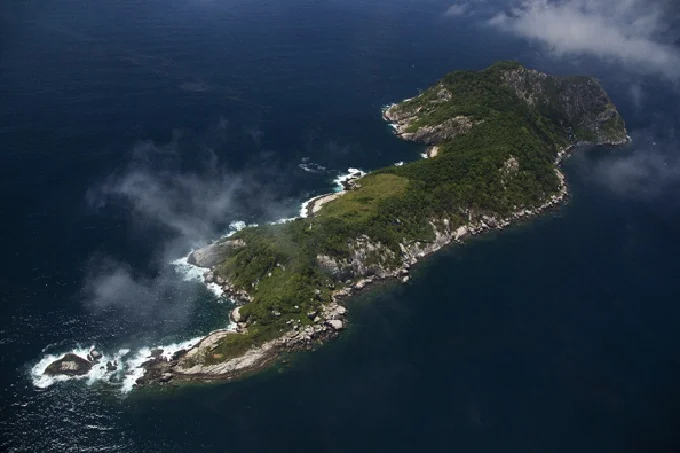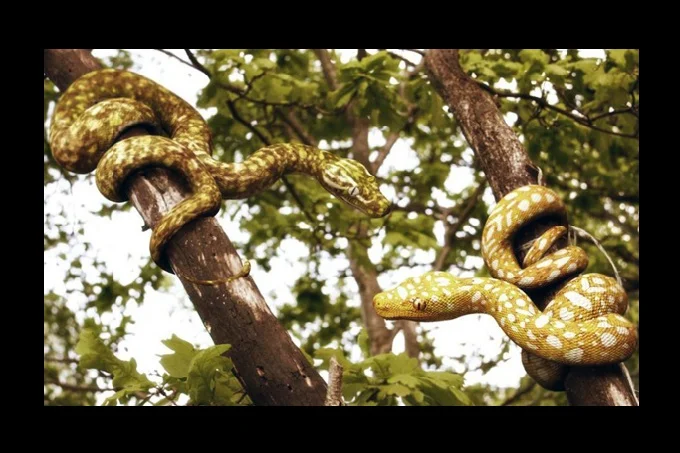Where is snake island and why was Queimada Grande closed for tourists 35 years ago?

Although authorities in many nations are working hard to attract visitors, Brazil closed the Snake Island, or Ilha da Queimada Grande, 35 kilometers off the coast, to the people 35 years ago.
There are no plans to modify this location in the near future. Naturally, there are significant reasons for this, and they have nothing to do with the bleak past of Ilha da Queimada Grande. Despite the pleasant temperature, tropical trees, and boundless ocean, Swimming up to the island is banned by law.
A dormant resort
Snake Island seems to be a popular vacation spot due to its location, temperature, and gorgeous rainforests. Except for one incident, everything points in this direction. According to geologists, the island was formerly linked to Brazil’s mainland by a tiny isthmus, but long-term geological processes caused the isthmus to sink under the ocean, thereby isolating Ilha da Queimada Grande. Long before that, the island was populated by snakes, and not just any snakes, but venomous snakes.
They dwelt on the territory in ancient times, but humans aggressively explored the forest, removing reptiles. They crossed the isthmus, which still existed at the time, to Ilha da Queimada Grande, where they currently reside as full-fledged proprietors, patrolling the land.
Snakes are the only creatures surviving on Ilha do Queimada Grande, and their major species is the spearheaded island Bothrops, which is one of the most poisonous and deadliest in the world. Its venom is much more toxic than that of a viper or a cobra, and its bite causes tissue necrosis quickly. After being poisoned, a mouse will only survive for two seconds.
Extinction
According to some reports, these snakes may grow to be two meters long, but on average, they grow to be 70 to 100 cm long, with the occasional exception of 118 cm. The Islet Bothrops have triangular or square patches all over their bodies and range in hue from pale brown to yellow-gold. This species is unique in that it can only be found in the wild on Snake Island.
The survival of this species is a major priority for Brazilian officials, which is why the island was closed to visitors. Because this kind of reptile is exceedingly hazardous when it comes close to humans, people have sought to eradicate it by burning the jungle and mass exterminating snakes throughout the years. Even though the island has been closed to visitors for 36 years (since 1985), the population of Bothrops continues to decline, which experts are concerned about.
It would seem that the snake island’s seclusion would aid in the preservation of Bothrops, however, this is exactly what leads to a steady decline in the number of snakes. To begin with, people were formerly heavily involved in the degradation of their ecosystem, removing flora on the island in order to retain a lighthouse. Second, a substantial number of intersexes (snakes born with both male and female reproductive organs) emerged due to the confined region. This is due to closely similar types of interbreeding in the same environment. Intersexes, on the other hand, are sterile and so unable to reproduce.
Snake conservation is a priority
The preservation of endangered reptiles is a major issue for the Brazilian government, although it is not just motivated by environmental concerns. Although visitors are prohibited from visiting the island, the Ilha da Queimada Grande generates significant revenue for the state. Scientists concluded that the chemical makeup of the island Bothrop’s venom is unique after studying it.
Pharmacists have developed medications based on them that have shown to be effective in the treatment of cancer. Brazilian scientists think that the venom of the spearhead snake island will aid in the development of a medicine that would help people live longer and stay healthy.

The Brazilian military forces defend the snake island around the clock, but there are always desperate fortune seekers eager to sacrifice their lives for even a gram of the island’s venom. It costs at least $30,000, and with the right set of conditions on the island, you may reap a large crop and amass wealth.
The dreadful legends of Snake Island
Ordinary folks are apprehensive about visiting the island. Even the most desperate fans of tickling their nerves are scared away from the snake island, which has earned a reputation as one of the most dangerous in the world. Legends of tragic events that occurred on Ilha da Queimada Grande in the past scare away even the most desperate fans.
More than a century ago, a lighthouse arose on Ilha do Queimada Grande, manned by a single keeper who lived with his family. According to legend, snakes crept into the lighthouse keeper’s hut one day and killed everyone.
The corpses of all the family members were allegedly discovered by the military, who landed on the island after the lighthouse stopped operating. Snake bites, of course, were the cause of death. After then, it was agreed that the lighthouse would run on its own. Except for the maintenance of the autonomous systems, no human interaction has been necessary for the navigation tower’s operation since 1925.

A fisherman was bitten by snakes when landing on the island and subsequently perished from bites in his boat, which was later discovered floating in the wide ocean. Fortunately, these sad tales are only awful legends, and there is no proof of anyone dying in agony in either instance. However, you should not risk destiny by attempting to enter the deadly island.




